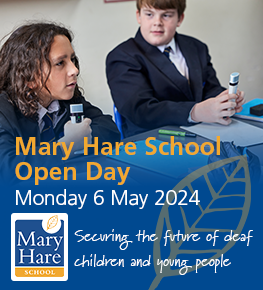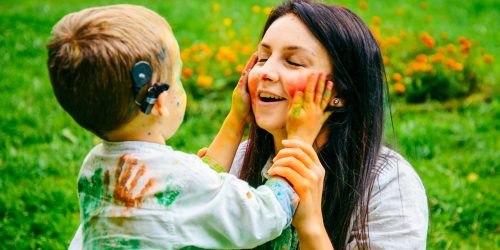3.2. Distraction testing
Introduction:
Infants from the age of six to seven months can actively participate in these assessments. The distraction test, although not a routine assessment, can be carried out on infants who are developmentally not ready to perform behavioural testing reliably.
The infant needs to be able to sit with minimal support and have good head control so they can turn with ease to locate the sound. This assessment identifies hearing sensitivity and does not result in an ‘absolute threshold of hearing’, nor will it clearly define any asymmetrical loss.
Procedure:
The assessment involves two audiologists: Tester 1 (the presenter) and Tester 2 (the distractor). Tester 2 has some simple toys to keep the infant focused, while Tester 1 stands behind the infant with a variety of noises (a high-frequency rattle and voice sounds – mmmm – ssss – shshshsh, warbler, etc). The aim is for the infant to turn when they hear the noise. As the toys are not calibrated to specific frequencies, the levels are approximated.
Considerations for QToDs:
- How can the family be prepared for this assessment? Support the family with simple activities to help both the family and the infant understand what is involved.
- The assessment is delivered in soundfield and so is not ear specific.
- There is no clear, defined threshold of hearing level.
- Are the infant’s responses reliable? Be aware that any auditory or visual cues subtly given by the family could affect the result.
- This assessment tends not to be used with infants over one year old as they are more socially aware.
Further reading
For further information refer to:
Next pages in section 3
3.3 Visual reinforcement audiometry
3.5 Assessing children with additional needs
3.6 Auditory neuropathy spectrum disorder (ANSD)
3.7 Auditory processing disorder (APD)
3.8 Cochlear implant assessment
3.9 Bone conduction implant assessment
Previous page in section 3
3.1 Newborn hearing screening programme (NHSP)
Other sections
- Section 1 Anatomy and physiology of the ear
- Section 2 – Aetiology and types of deafness
- Section 4 Acoustics and physics of sound
- Section 5 Listening skills and functional hearing
- Section 6 Hearing technologies




